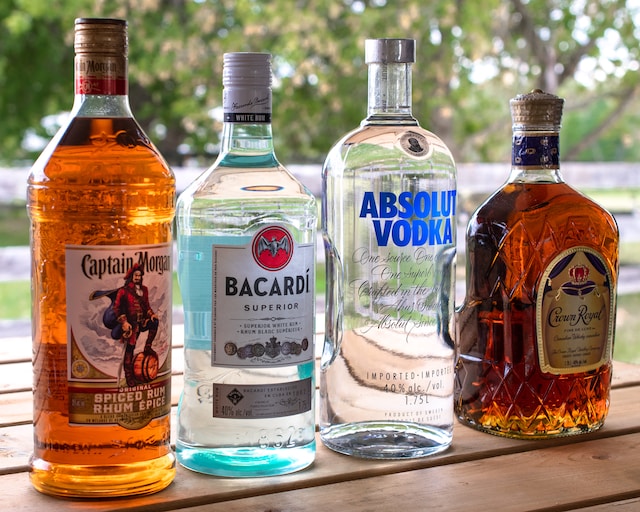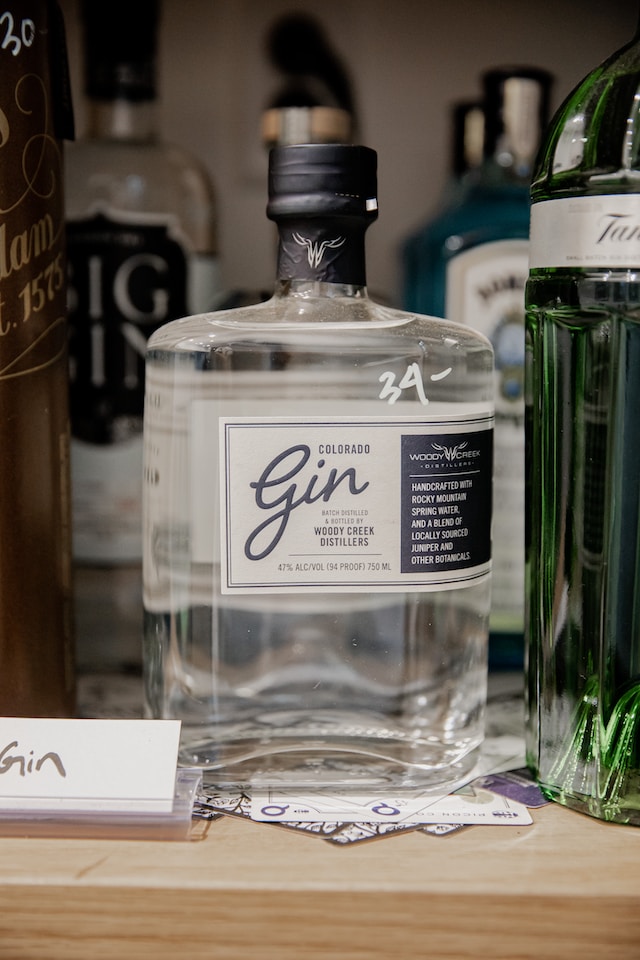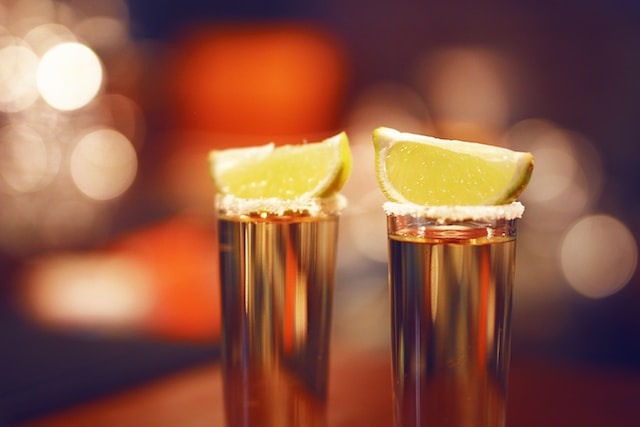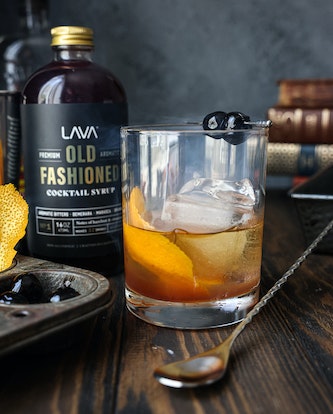
Alcohol, the elixir of life, has been an essential part of human civilization since time immemorial. From being used for spiritual and medicinal purposes to being a source of entertainment, alcohol has moved mountains and stirred emotions.
When it comes to making drinks, the selection of alcohol is crucial, as it can directly influence the taste and quality of the drink. Here are some of the most popular alcohols used in drinks:
Vodka
A clear, odorless, and tasteless alcohol that can be made from a variety of sources, including grains, potatoes, and even grapes. Vodka is a versatile alcohol that can be mixed with almost anything and can be used to make a wide range of drinks, from Bloody Marys to Cosmopolitans.
Vodka wasn’t always the versatile and adaptable alcohol that it is now. Its early origins were more humble, with it being primarily used for medicinal purposes and as a disinfectant. It wasn’t until the 20th century that vodka transformed into the beloved spirit it is today.
Its ability to be mixed with almost any drink ingredient made it a go-to choice for bartenders and cocktail enthusiasts. Additionally, its lack of distinct taste and odor makes it an excellent base for drinks that require other flavors to shine. This versatility makes it a must-have in any liquor cabinet, as it can be used for everything from a simple vodka soda to more complicated cocktails like a White Russian or a Sea Breeze.

Interestingly, some of the best vodkas in the world come from unexpected places like Poland, Russia, and the United States. Each region has its unique spin on the spirit, from Texas’ Tito’s Handmade Vodka to Russia’s Stolichnaya. It’s also a spirit that is easy to make at home, with various kits available online or at specialty stores.
Rum
A distilled alcoholic beverage made from sugarcane byproducts, such as molasses, or directly from sugarcane juice. It has a spiced and sweet flavor profile that makes it perfect for tropical drinks like Piña Coladas and Mai Tais.
Rum is a complex spirit that can range from light and fruity to dark and rich, depending on the type and aging process. White rums are often used in cocktails and have a less intense flavor profile, while dark rums are aged in barrels and have a more distinct taste.
Some of the best rums in the world come from the Caribbean, with countries like Jamaica and Barbados being particularly known for their high-quality rums. One of the best ways to enjoy rum is to sip it neat or on the rocks, allowing its unique flavors and aromas to shine. Additionally, rum can be used as a cooking ingredient in dishes like rum cakes and Caribbean-inspired marinades for meats.
Gin
A clear spirit that is flavored with botanicals, including juniper berries, coriander, and angelica. Gin is commonly used in classic cocktails like Martinis and Gimlets.
The spirit has a rich and fascinating history. Originating in the Netherlands in the 17th century, gin was originally used for medicinal purposes, including treating ailments like malaria and arthritis. It wasn’t until later that gin became a popular recreational drink, spreading throughout Europe and eventually making its way to England, where it became a staple in the British drinking culture.
The popularity of gin led to the creation of numerous flavored varieties, with botanicals and other flavorings being added to the distillation process. Some of the most popular botanicals used in gin include juniper berries, coriander, citrus peel, and orris root. These ingredients give gin its unique taste and aroma, and the way they are blended can vary greatly depending on the distillery and brand.
One interesting variation of gin is known as “sloe gin” which is made by steeping sloe berries (a type of fruit similar to a plum) in gin and sugar. This sweet and tart liqueur is often enjoyed on its own or mixed into cocktails like the Sloe Gin Fizz.
Gin is also a spirit that is incredibly versatile and pairs well with a variety of mixers, syrups, and fruits. It can be used in classic cocktails like the Negroni and the Tom Collins, as well as in modern creations like the Gin Sour and the Gin Martini.

Whiskey
A distilled spirit made from fermented grain mash. It can be further categorized into various types such as bourbon, rye, and Scotch whiskey. Whiskey is a popular spirit that can be enjoyed neat or mixed into cocktails like Old Fashioneds and Whiskey Sours.
Each type of whiskey has its unique flavor and is produced using specific regulations. Bourbon, for instance, is produced in the United States and must be made from at least 51% corn and aged in new, charred oak barrels. Rye whiskey, on the other hand, must be made from at least 51% rye and aged in charred oak barrels.
The distinct taste of rye whiskey makes it a perfect ingredient for classic cocktails like the Manhattan and the Sazerac. Scotch whiskey is made in Scotland and has strict regulations on how it can be produced, with each batch required to be aged for at least three years in oak casks. The smoky flavor and aroma of Scotch whiskey make it an ideal ingredient for drinks like the Rob Roy and the Blood and Sand.
Whiskey can be enjoyed in a variety of ways, whether it’s sipped neat, on the rocks, or mixed into cocktails. Bartenders and whiskey lovers alike continue to push the boundaries of what is possible with this classic spirit, creating innovative and unique drinks that showcase the depth and complexity of the whiskey world.
Tequila

A distilled alcoholic beverage made from the blue agave plant that is primarily grown in Mexico. Tequila is famous for being the signature alcohol of margaritas but can also be enjoyed in various cocktails or sipped on its own.
Tequila is an iconic spirit that has become synonymous with Mexican culture and cuisine. Made from the blue agave plant, which is primarily grown in the Jalisco region of Mexico, tequila has a unique flavor that is both sweet and earthy. The production process for tequila is highly regulated, with rules on everything from the types of agave plants that can be used to the labeling of the final product.
A versatile spirit, tequila can be enjoyed in a variety of ways. While the classic margarita is a fan favorite, tequila can also be mixed with other ingredients to create unique and flavorful cocktails. For a fun twist on the margarita, try a spicy jalapeno margarita or a fruity mango margarita. Tequila can also be enjoyed on its own, with high-end brands offering premium aged varieties that are meant to be sipped and savored.
Liqueurs
Liqueurs are sweetened and flavored alcoholic beverages that are commonly used in cocktails and desserts. They can be made from a vast array of ingredients, including fruits, herbs, nuts, and even flowers. Liqueurs are often enjoyed on their own as digestifs or used as a flavorful addition to mixed drinks. Here is a closer look at liqueurs and some of the most popular ones used in cocktails.
These beverages are created by infusing alcohol with various flavorings, such as fruits, herbs, or spices, then sweetening the mixture with sugar or honey.

The result is a sweet and flavorful alcohol that is perfect for adding depth and complexity to cocktails. Liqueurs come in a range of colors and flavors, from bright orange Cointreau to deep green Chartreuse.
When it comes to cocktails, liqueurs can be used in a variety of ways. They can be used as a primary flavor component, as a sweetener, or to add a unique twist to classic cocktails. Let’s take a look at some popular liqueurs and the cocktails they are commonly featured in:
Fruit-flavored liqueurs
These sweet and fruity liqueurs are often used to add a burst of flavor to cocktails. Cointreau and Grand Marnier are two popular orange-flavored liqueurs that are used in classic cocktails like the Margarita and the Sidecar. Chambord, a raspberry-flavored liqueur, is commonly used in cocktails like the French Martini and the Kir Royale.
Coffee and chocolate liqueurs
These rich and decadent liqueurs are perfect for adding a touch of sweetness and depth to cocktails. Kahlúa, a coffee-flavored liqueur, is a key ingredient in the classic White Russian cocktail, while Baileys, an Irish cream liqueur, is often used in dessert cocktails like the Mudslide.
Herbal liqueurs
These potent and complex liqueurs are made from a blend of herbs and spices, giving them a distinctive and memorable flavor profile. Chartreuse, a bright green liqueur made by Carthusian monks, is often used in cocktails like the Alpine Manhattan and the Last Word. Campari, a bitter orange liqueur, is a key ingredient in the Negroni and the Americano.
Choosing the Right Alcohol for Cocktails
If you’re looking to make the perfect cocktail, choosing the right alcohol is crucial. Each type of alcohol has its unique flavor profile, aroma, and characteristics that can either enhance or detract from a drink’s overall taste. Here are some tips for selecting the right alcohol for your cocktails:
Understand the flavor profiles and characteristics of different alcohols
Each alcohol has its distinct flavor profile, ranging from the earthy and smoky taste of whiskey to the sweet and fruity notes of rum. Understanding the flavor profiles and characteristics of different alcohols is crucial for creating balanced and flavorful cocktails. For example, vodka is a neutral spirit that can blend seamlessly with other ingredients, while gin has a distinctive and botanical taste that can overpower other flavors if not used correctly.

Pair alcohols with mixers and ingredients
When selecting an alcohol for your cocktail, consider the other ingredients and mixers that you plan to use. Certain alcohols, such as tequila, pair well with citrus juices, while others, like whiskey, go well with bitters and other aromatic ingredients. By pairing alcohols with complementary mixers and ingredients, you can create a cohesive and flavorful drink.
Explore flavor combinations and experimentation
One of the best things about creating cocktails is the ability to experiment and try out new flavor combinations. Don’t be afraid to mix and match different alcohols and ingredients to create unique and unexpected tastes. For example, try adding a splash of rum to your Margarita for a tropical twist or a dash of gin to your Bloody Mary for an herbal kick.
Storing Different Types of Alcohols
Different types of alcohol require specific storage conditions to maintain their optimum quality and flavor. Here are some general guidelines for storing common types of alcohols:
1. Vodka: Store vodka in a cool, dry place, away from direct sunlight. It does not require refrigeration, but it can be stored in the refrigerator if desired.
2. Rum: Store dark rum in a cool, dark place like a pantry or cellar. It can also be stored in the refrigerator but should be brought to room temperature before consumption. Light rum can be stored in the same way but does not require as much aging.
3. Gin: Store gin in a cool, dry place, away from direct sunlight. It should be stored in a sealed container to prevent contamination.

4. Whiskey: Whiskey should be stored upright in a cool, dark place with a steady temperature. It should not be stored on its side, as this can cause the cork to deteriorate and taint the whiskey.
5. Tequila: Store tequila in a cool, dark place, away from direct sunlight. It should be stored in a sealed container to prevent contamination.
Serving and Pouring Alcohol in Cocktails
1. Use a jigger to measure the alcohol accurately. Overpouring can result in a drink that is too strong, while underpouring can make the drink taste weak.
2. Shake or stir the cocktail properly to ensure that the alcohol is evenly distributed. This helps to bring out the flavors of the other ingredients in the cocktail.
3. Use ice as needed to chill the drink and dilute it slightly. This can help to balance out the strong flavors of the alcohol and other ingredients in the drink.
4. Use a strainer to prevent the ice from diluting the drink as it is poured into a glass. This helps to maintain the proper balance of the drink.
Alcohols play a significant role in the taste, texture, and aroma of drinks, and mastering the art of selecting the right alcohol for each drink is what sets a great bartender apart from the rest. Cheers to the world of spirits and all the delicious drinks they make possible!
